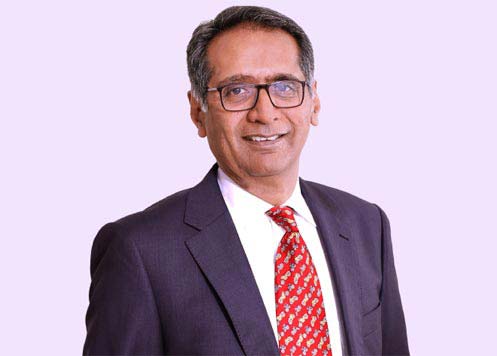‘Elgi’s international business will do better than domestic in near term’

In India it is a little difficult to predict now how the economy will bounce back: Managing Director
Coimbatore-based Elgi Equipments Ltd, a leading global air compressor manufacturer, managed to end the pandemic-hit FY21 with a marginal growth in its consolidated revenue at Rs. 1,924 crore (against Rs. 1,829 crore in FY20). Internationalisation of its business helped the company in FY21 as bulk of its growth came from North America, Europe and Australia. Jairam Varadaraj, Managing Director, spoke to BusinessLine about the growing opportunities in the international business, its strategic business plan and market recovery. Excerpts:
What has been the impact of the pandemic on domestic and international business this year?
The second wave was primarily an India-centric one. Overall, May and June have been challenging periods. So, we did reasonably ok. The demand for oxygen generators was huge and so we diverted all our capacity towards that. It was challenging for a few weeks for manufacturing due to the diversion. We had to look at alternative methods using gases though it was a little inefficient.
Our major international markets such as the US and Europe have recovered quite well. They really hit the bottom last year and they are all coming back. With a huge share of the US population vaccinated, we see activities coming back. Australia’s recovery is ok but not as strong as Europe. South-East Asia is more like India as they are also going through the impact of the second wave. Overall, international markets such as the US, Europe and Australia are performing a lot better than India.
We gather that you may resume strategic investment initiatives in Europe this year. What are the plans?
After our good experience in France and Italy we wanted to expand to other countries in Europe. So, we decided to do that organically by making strategic investments in people to support growth in the European region, which reported a significant growth last year.
We started this two years ago. When the pandemic hit last year, we kind of paused it. Since everything is settling down now and things are coming back, we have restarted the process of building teams and it has been very positive for us. We have close to 70 people, and it will increase to over 90 primarily to strengthen sales, service, product and other strategic functions. We have entered pretty much all markets, except Germany, in Europe.
There is a growing share of international sales in revenue and what is the likely revenue mix in the coming years?
Ideally, I would like to be a lot less dependent on one region. India is our home market with 50 per cent revenue coming from here.We have not set any target for revenue mix. We have taken certain assumptions based on the growth of each of our strategic markets. If we go by those assumptions under our strategic business plan (SBP), probably international (rest of the world) will be 60 per cent and India will be 40 per cent of our revenue.
You have revised your revenue targets. Have you turned a little conservative now?
Last year, we had a little bit of pause and we wanted to take stock of what is going on and see how we can use this time a little bit more productively to bring sharper alignment to our long-term plans. One of the things we decided was to break our plan down to more parts under which we wanted to reach smaller milestones that are more visible. So, we looked at building a strategic business plan with a revenue target of $400 million, 16 per cent EBITDA and 30 per cent ROCE – to be achieved by FY26. We are quite confident that we will achieve them as we are heading in that direction.
What is the demand outlook for the domestic market?
In India it is a little difficult to predict now how the economy will bounce back. We are taking a cautious view on the outlook.
We are looking at marginal growth during this fiscal. We may not see a dramatic recovery like last time as the drop was very dramatic across the country last time. But this time it is very localised and very regional. It will come back in bits and stuff.
READ MORE
